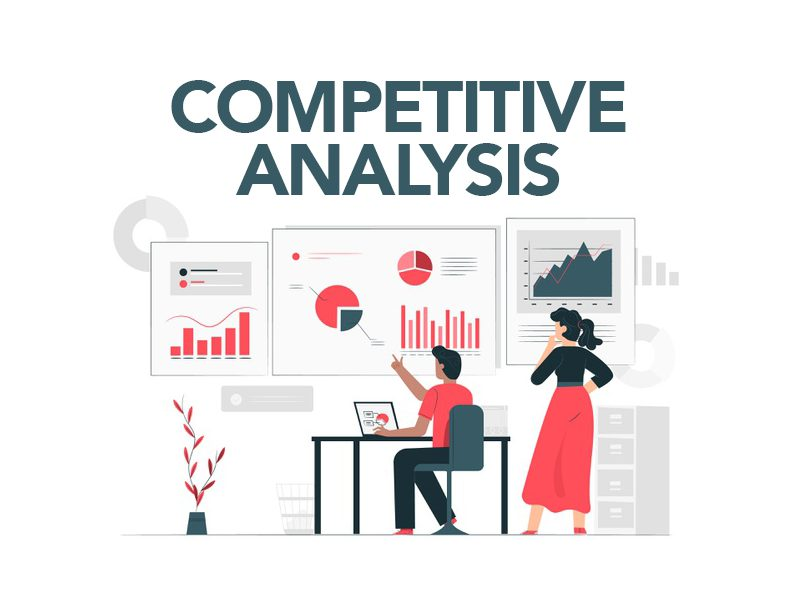Competitor Analysis in Depth: How Ahrefs and SEMrush Stack Up
Share

In the world of digital marketing, success often hinges on understanding your competition. What are they doing right? Where are they getting traffic? What content is resonating with their audience? These questions can lead to actionable insights—and two of the most powerful tools for answering them are Ahrefs and SEMrush.
While both tools offer extensive features for SEO and marketing intelligence, they take different approaches to competitor analysis. One shines in backlink tracking and organic keyword strategy, while the other excels in traffic behavior, ad intelligence, and overall market positioning.
Let’s walk through a real-world use case of how an online course provider used both Ahrefs and SEMrush to evaluate the competition, refine their strategy, and ultimately boost their visibility.

The Challenge: Gaining Ground in a Competitive Niche
This course provider was offering professional development programs in a highly competitive industry. Despite having solid content and a functional website, they were struggling to gain visibility against well-established competitors. Their team wanted to:
-
Identify where competitors were getting their traffic
-
Understand what content was driving engagement
-
Find backlink sources to improve domain authority
-
Spot keyword opportunities that had been overlooked
Rather than relying on assumptions, they turned to SEMrush and Ahrefs to guide their strategy with data.
Step One: Traffic and Behavior Analysis with SEMrush
The first step was understanding how competitors were acquiring their traffic—and where it was coming from. Using SEMrush, the team conducted a deep dive into several direct competitors.
They used the Traffic Analytics tool to gather insight into each competitor’s:
-
Monthly traffic volume
-
Top traffic sources (organic, paid, direct, referral, social)
-
Engagement metrics like bounce rate and session duration
-
Geographic breakdown of visitors
What they discovered was eye-opening. One competitor, for instance, was receiving a substantial portion of traffic from referral sites and guest blog features. Another was heavily reliant on branded search, indicating strong brand awareness.
SEMrush also allowed them to view top-performing pages, which helped identify the types of content (e.g., “how-to guides,” “free resource libraries,” “certification comparisons”) that were attracting visitors.
These insights shaped their content strategy. Instead of only writing course descriptions and landing pages, they started developing educational blog posts and downloadable resources—similar to their most successful rivals.
Step Two: Backlink Discovery and SEO Positioning with Ahrefs
Once they understood the content and traffic behaviors of their competitors, it was time to explore how those pages were gaining authority. That’s where Ahrefs came into play.
Using the Site Explorer feature, they entered the competitor domains and retrieved:
-
Referring domains
-
New and lost backlinks
-
Top-linked content
-
Anchor texts used
This data revealed that competitors were earning links from industry blogs, news outlets, and university websites. Some had even built partnerships with educational directories.
Ahrefs also helped them discover content formats that attracted the most links—things like statistics roundups, research-based infographics, and expert interviews. With this knowledge, the provider could reverse-engineer their own content that was link-worthy and aligned with SEO best practices.
Moreover, by analyzing competitors’ keyword profiles, they spotted opportunities in niche terms that had low difficulty and high relevance but weren’t being aggressively targeted. This allowed them to position their content strategically rather than simply trying to compete on saturated keywords.
Coordinated Strategy and Execution
Armed with insights from both platforms, the course provider took a focused, data-backed approach to optimization.
They updated their site structure and created content clusters around specific topics their audience was interested in. They also launched a backlink outreach campaign, targeting domains that had linked to competitors but not yet to them.
To track impact, they monitored keyword rankings with both tools and saw gradual improvement. Articles began to climb in SERPs, and the domain authority rose steadily thanks to new, high-quality backlinks.
Their traffic reports showed that users were staying longer and converting more—especially on blog articles that linked to free course previews and lead magnets.
The Takeaway: Know the Strengths of Each Tool
SEMrush provided a clear view of the competition’s digital footprint. It showed where traffic was coming from, what content worked best, and what the engagement metrics looked like. It was particularly useful for marketing teams that needed a strategic overview.
Ahrefs, on the other hand, offered granular backlink data, in-depth keyword analysis, and visibility into the link-building strategies that powered top-ranking pages. It became the go-to tool for the SEO specialist on the team.
By combining both, the course provider didn’t just emulate their competitors—they learned from them and built something better, tailored to their unique audience and niche.
Final Thoughts
Competitor analysis isn’t about copying—it’s about uncovering patterns, filling gaps, and building a smarter strategy. Tools like SEMrush and Ahrefs are most effective when used together, each offering a different lens into the competitive landscape.
Whether you’re running an online course platform, an e-commerce site, or a B2B service, deep competitor insights can guide your growth. With the right data and the right tools, even smaller players can stand out—and succeed—in crowded markets.

Share

Keep me postedto follow product news, latest in technology, solutions, and updates
Related articles
Explore all


